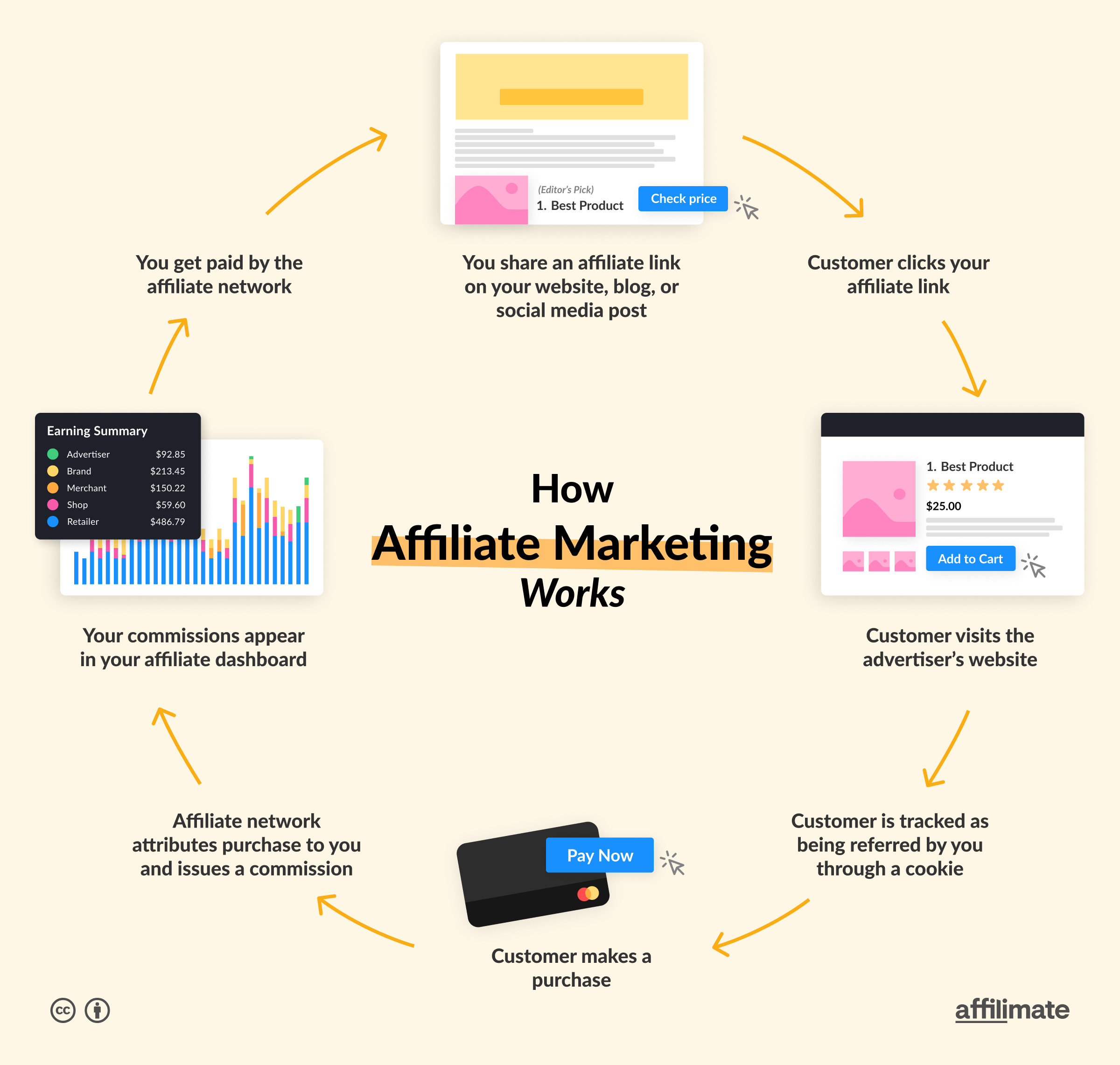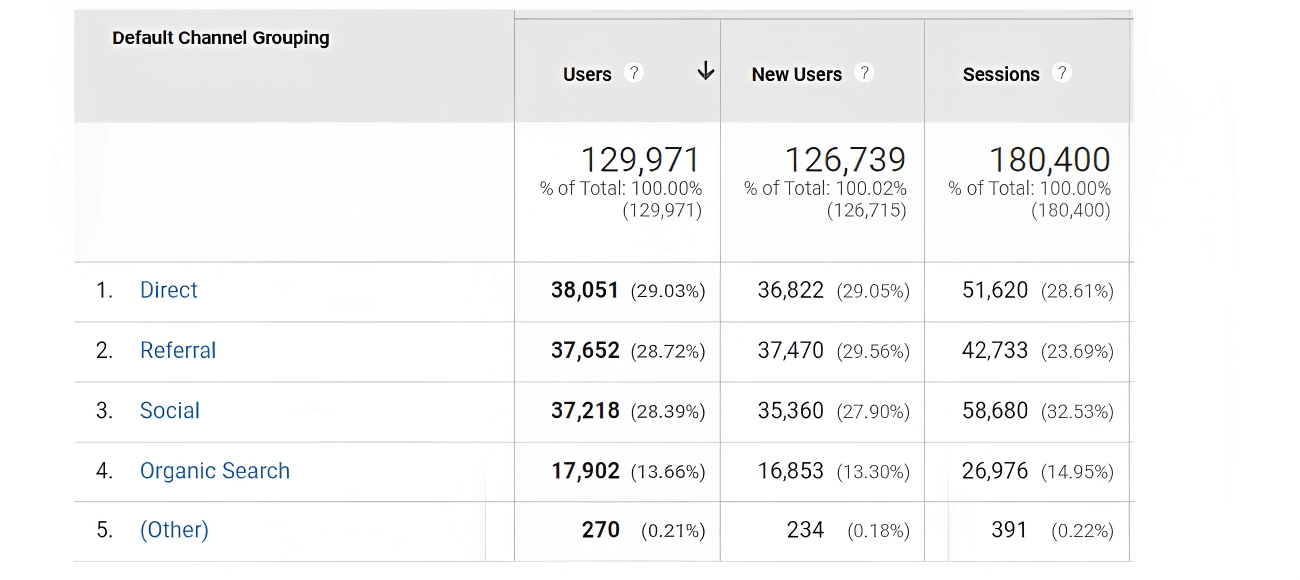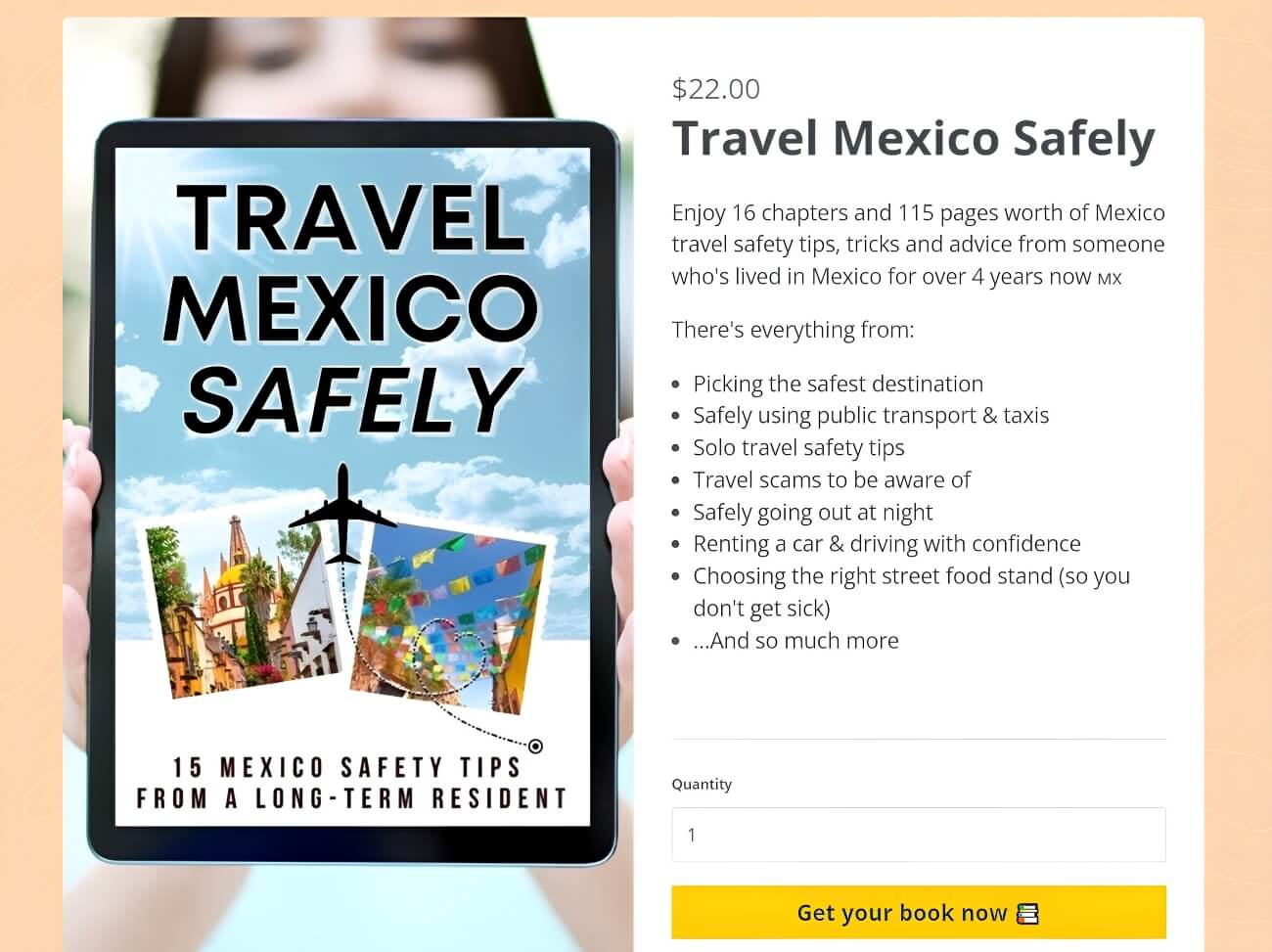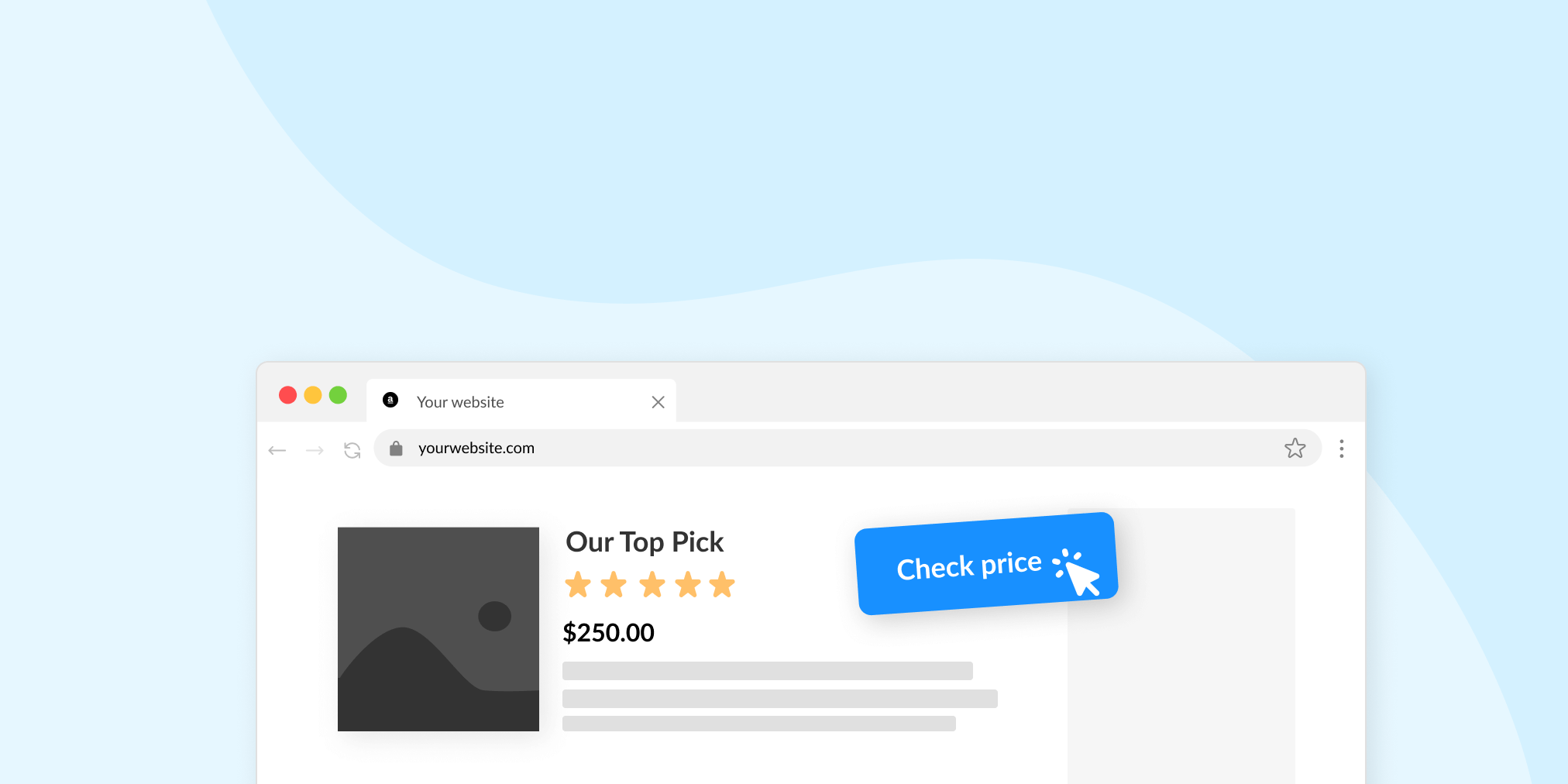How to Monetize a Blog in 2023: Expert Tips, Strategies, & FAQs
From affiliate partnerships and display ads to subscriptions, and products, here’s the 411 on how to monetize a blog!
So you wanna start a blog. Maybe your ears perked up at the content marketing industry’s reported $584 billion value.
Or maybe you just really love sharing your knowledge and passion for cheese with the world.
Regardless of how you came to this decision, it’s true: a blog is a revenue source that caters to any interest. But if you’re looking for ways to monetize a blog, you can’t treat it like a diary.
Successful bloggers don’t blog for themselves – they create content for their audiences and Google’s crawlers. This is what sets the blogs with revenue apart from those without.
That said, blogs aren’t a get-rich-quick affair. Google’s top search engine results page (SERP) links are websites that have been live for at least two years.
Some content marketers see an initial return sooner, though.
One of them is Shelley Marmor, founder of travel blog TravelMexicoSolo:
I started my blog in April 2020 and I made my first return with it in January 2021 – a whole $77.10.
But it might as well have been a million!
Indeed, a million isn’t a stretch when we look at the big-shot bloggers. Personal finance blog Fin Savvy Panda brought in about $27,000 income in a single month.
Just like there’s more than one way to serve an egg, there’s more than one way to generate revenue from blogs. Your hollandaise sauce is a carefully placed ad – your crispy bacon pairing is a juicy affiliate partnership.
These expert tips and strategies will help you monetize your blog like a pro.
1. Become an affiliate partner to monetize a blog
Affilimate built an entire platform to maximize revenue from affiliate partnerships. So naturally, the affiliate partnership is our favorite blog monetization strategy.

And there’s no better time to be an affiliate blogger than 2023. You have 81% of brands with affiliate programs to pick from – and trust us, those brands recognize your value. Eighty-four percent of businesses say their ROI from affiliate marketing is superior compared with every other channel.
You have two routes for blogging with affiliate marketing: cost per action (CPA) and cost per click (CPC).
- Cost per action: You get a commission every time you lead a customer to an action on your partner’s website (usually a transaction or sale, but even newsletter signups).
- Cost per click: You get a commission for every new web visitor you refer to a brand’s website.
Undoubtedly, your fabulous product roundups, how-to guides, and other blog content will lead your audience to your partners’ sites.
But you’ll need to pick the right partners to improve your chances of earning a commission.
Marmor from TravelMexicoSolo recommends sticking to what you know:
I affiliate with programs and products I use and like. I tend to stick to larger programs that are tried and true, rather than smaller programs.
But what if your favorite brands are among the near-20% of brands who don’t have affiliate programs?
Peter Reynolds, founder of cycling blog DiscerningCyclist, has a solution:
I find the products that I want to recommend first and then find out if there is an affiliate program for them. If not, I'll reach out to the brand and see if they'd be open to starting one.
Both are fab affiliate marketing tips. You’ll establish more trust with your audience if you demonstrate a genuine interest in the products you’re recommending.
2. Use display ads
Display ads are a tried-and-true monetization strategy for blogs. They’re especially useful for niches where affiliate links don’t bring in as much revenue. For example, a home chef won’t be able to pay the bills earning 5% on each $16 Amazon measuring cup.
Still, ads can bring in revenue for any niche, including travel. Megan Starr, founder of travel blog Megan & Aram as well as four other blogs, sees ads as her most successful monetization strategy:
I did it as a hobby for several years and when I decided to monetize, I had ‘accidentally’ built it big enough that it could be my full-time job. So, I quit my job, applied for ads, and the rest is history.
Here are a couple of managed ad providers and what you’ll need to access them:
- Ezoic: This provider boasts the highest-earning ads and takes a 10% share of your revenue. Publishers fall into five different levels: 1, 2, 3, 4, and VIP.
- Mediavine: You’ll need long-form content and at least 50,000 sessions a month on your website to work with Mediavine. This ad management platform offers page-level reporting, too.
- Raptive: Formerly known as AdThrive, Raptive is one of the most popular ad platforms and requires 100,000 monthly sessions. Their solution covers business, audience, and revenue areas for publishers in four levels based on revenue: Insider, Platinum, Platinum Elite, and Luminary.
So, how much can a blogger earn from ads these days?
Dessert blog Stephanie’s Sweets brings home a nice, consistent income with Mediavine. Her Q2 2022 income report shows just from ads, more than $4,000 was generated in April.
Ad revenue is essentially an affiliate’s way to monetize blog traffic. Stephanie Rutherford, the site’s founder, knows this, and shares traffic insights to explain her big revenue month in April 2022:

Luckily, you have plenty of free traffic sources to choose from to get more ad hits, including social media platforms like Instagram, as well as Google’s soulmate, search engine optimization (SEO).
But ads pose some challenges you should keep in mind. For example, about 60% of readers use ad blockers. If your readers are blocking ads, should you restrict the content until they disable the blocker? You can do that, but you’ll risk losing them completely.
Cloud hosting platform Kinsta recommends using DetectAdBlock to see how many of your web visitors use ad blockers. If the number is astronomical, you should definitely diversify your blog monetization strategy.
3. Get sponsored to create content
Ever notice blogs with how-to guides that dive deep into various products? It’s possible that a brand paid the blogger to write that content. Sponsored content comes in many forms, including guest posts, interviews, and podcast episodes.
We’ve seen sponsored content bring food and travel bloggers consistent monthly revenue. Even business bloggers can hit it big if they get into the podcast game.
But sponsored content isn’t for everyone. TravelMexicoSolo’s Marmor is an example:
I don't do sponsored content because it feels inauthentic to me. But that is a personal choice.
4. Monetize directly with a subscription-based blog
Why do millions of readers subscribe to media institutions like The New York Times and Insider? While readers come for the wide variety of exceptional journalism, they stay because that content is interesting and useful in their everyday lives.
We’re not suggesting you try to compete with NYT, but there’s much to learn from the subscription-based content model. One common blog monetization strategy is to offer both a free version and a paid version that includes valuable, exclusive content. It’s important to find a price point that makes sense for your readers, since subscription fees can vary from $2/month to $200/year.
However, James Kunle, founder of South African content agency Mamzansi doesn’t see vast opportunities for subscription-based blogs from a reader's perspective.
I will only subscribe to a blog if the blog content solves my problem.
Barry MacDonald, founder of Writecome.com, concurs:
Free goes far, paid…not so much. Prove that you know what you’re talking about or give a reader the result they want [for free], and you’ve got their attention.
Once you have that, and if you have even better content, you could put that behind a paywall if you want to. Chances are though, you won’t have many come over.
5. Sell products on your blog
Say you have substantial traffic to your blog – in other words, a nice pool of potential customers. What happens if you have no products of your own?
You can create products that build upon the value you already provide through your content. For example, you could dive deep into a hot topic and sell an eBook. You could also create templates to help your readers solve problems. Maybe it’s a list of to-dos for this or that travel destination. Whatever the asset may be, your goal is to deliver a product your existing audience want to buy.
Of course, your creativity can shine through stylish merch, too. Just don’t get too pushy about selling products. As Forbes so simply puts it: “don’t be annoying.”
You might promote your products through a CTA at the end of a blog post or on a banner. It would be overkill to do both, on top of a sidebar that never disappears when the reader tries to exit out.
Remember, you should always maintain the original purpose of your blog: to inform people and help solve their problems. Even if your products are the best solutions you offer, you can’t center all your content around them.
We love how classy TravelMexicoSolo’s Marmor is about her product. She features a jam-packed blog about Mexican travel with tons of free content, and keeps her product on a dedicated page for interested readers:

6. Optimize Your Blog for Monetization
Whether you have affiliate partnerships, digital products, subscriptions, or all of the above, you won’t monetize blog content if nobody visits your website. That’s why SEO is a must for any blogger. You’ll need to read up on the latest hot keywords to create content your audience will find useful.
Reynolds from DiscerningCyclist shares his insights:
Figure out what problems people are having in your niche, then provide (or guide them to) solutions.
That might mean something technical (e.g. how can I X?) or help with finding a suitable product, e.g. best X for Y.
If you're just starting out, begin with the nichest of niche problems. When you've built some authority, you can start going after more competitive terms.
TravelMexicoSolo’s Marmor reiterates the importance of knowing your niche:
Pick a niche because ‘the riches are in the niches.’ Many people think ‘a niche will limit me,’ but it's the fastest way to grow a site.
Now it’s a matter of keeping up with your target audience’s needs, as well as Google’s algorithms. Once you start bringing in more money, you may find it helpful to hire some help with your SEO strategy.
Let's do a check up:
- Audience research? Check.
- Identified your niche? Check.
- Read up on SEO? Check.
But how do you keep that money rolling in?
You need a system to check on progress, maximize efficiency, and consistently grow your revenue.
Successful content marketers use different tools to meet their various needs. For example, Marmor uses ConvertKit for her website, a hub that helps creators with email templates, landing pages, eBooks, and other digital products. Starr from Megan & Aram uses Asana for project management to keep things organized within her team.
Once you have a solid flow going, you’ll want to check in on your revenue and partnerships. Which content brings you the most revenue? Which affiliate partners reward you with bonuses?
Peter Reynolds advises:
Be consistent and patient. Publish as many articles targeting low competition long tail keywords. After a few months, revisit the articles and see what's worked. Then do more of that.
The best way to stay on top of reports is the right software stack. Affilimate’s dashboard helps you keep tabs on all your performance data and aggregates commissions in one place.
Finally, Reynolds draws this conclusion:
It's the best way to track how pages and links are performing and discover new opportunities.
Affilimate helps you craft a data-informed strategy to make passive income online from blogging. You’ll have access to rich analytics and reports, and our aggregated-partner commission dashboard will keep you on top of your revenue trends. Ready to monetize your blog? Try our free trial today!
How to Monetize A Blog in 2023 FAQs
How much money can bloggers make?
Bloggers can make anywhere from $20 to $80,000 per month. The time you put in, SEO strategy, product sales, the number of websites, expenses, and other factors determine your revenue.
What are the best blog monetization methods in 2023? Which one should I use to monetize my blog?
- Affiliate marketing – best for highest profits long-term
- Sponsored content – best for food and travel blogs
- Display ads – best for beginners and quick starts
- Subscriptions – best for bloggers with longstanding history and immense customer loyalty
- Products – best products for bloggers are digital products
How to monetize a blog for beginners?
Quick steps:
- Pick a niche.
- Find a hosting platform.
- Study your audience.
- Create stellar content.
- Generate traffic through SEO.
Apply our blog monetization strategies and start blogging today.
Can I monetize a blog?
Yes, you can monetize a blog with:
- Affiliate partnerships
- Sponsored content
- Display ads
- Product sales
How long does it take for a blog to make money?
It takes an average 24 months for a blog to generate revenue. The exact timing depends on several factors, including:
- How much help you have (if any).
- Whether you started the site from scratch or invested in it later on.
- SEO efforts.
- Diversification of blog monetization strategies.
What types of blogs make the most money?
- Business
- Entrepreneurship
- Business and podcasting
- Business and blogging
The blogs that make the most money teach readers how to make money for themselves. These blog types generated 67.5% of all the blog income we analyzed in our blog income reports.

